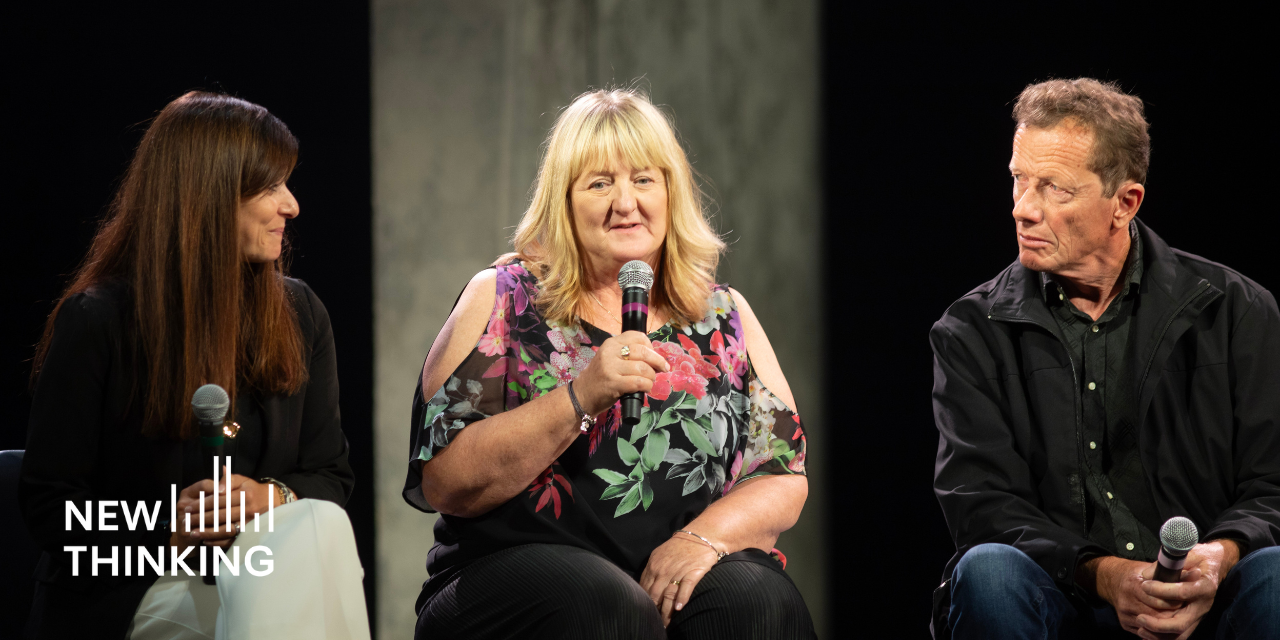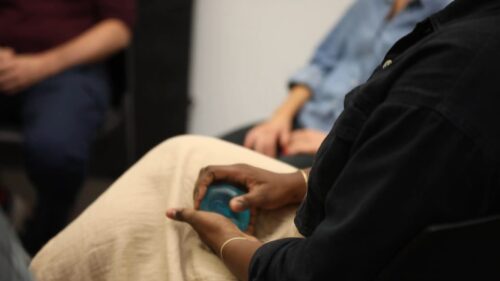Roxann Pais was appointed to be Dallas’s chief community prosecutor in 2001. Carolyn Turgeon from the Center for Court Innovation talked with Pais about the unique contributions her office has made to the field of community prosecution.
When and why did the Dallas City Attorney’s Office first get interested in community prosecution? Madeline Johnson, the former Dallas City Attorney, had worked previously as a federal prosecutor for the Northern District of Texas. That’s where she learned about community prosecution, because the U.S. Attorney’s Office in Washington D.C. was doing community prosecution. When Madeline became city attorney, one of her goals was to begin developing and implementing innovative new strategies for reducing crimes in the city of Dallas. After she was appointed but before she was even visibly in office, Madeline applied for community prosecution grants. She asked me to begin learning about community prosecution to develop the plan, at which point I met Mike Kuykendall from the American Prosecutors Research Institute, which provided the technical assistance for us to get started. We officially began the program in April 2001. Our new City Attorney, Thomas P. Perkins, continues to support and promote community prosecution.
The real uniqueness of Dallas’s community prosecution program strategy is that we prosecute Class C misdemeanors—offenses that are punishable by fine only, but I believe that these low-grade quality-of-life crimes are the ones that really cause the problems for communities. We in essence have the jurisdiction to fix the broken window, literally.
How does the program work?
We have nine target neighborhoods and each has its own community prosecutor. The community prosecutor is in the neighborhood on a full-time basis, literally trying to figure out how to proactively solve crime. They go to a lot of community meetings where they identify what the priority problems are in the neighborhood and then they come up with creative legal strategies. These strategies involve both the criminal system and the civil system—because remember we have civil jurisdiction as well, so we can actually file civil lawsuits against property owners for failing to take reasonable measures to abate crime, or for failing to maintain housing standards.
Dallas has one of the relatively few city attorneys’ offices in the country that practices community prosecution. What strengths does a city attorney’s office bring to the table?
One advantage to our program here in Dallas is that as city attorneys we have very good close working relationships with city departments; whether it’s police or public works or street sanitation or animal control or the water department for broken lines or electricity, we work very closely with them. So being able to clean up neighborhoods and effect change is a little faster for us.
Also, as city attorneys, we are the attorneys that draft the ordinances adopted by our City Council. And so if we see any problem with an ordinance or we have a new idea about something that we’re seeing in the neighborhood that needs to get addressed, we can get new laws passed. We had a lot of shopping cart problems, for example—people were stealing shopping carts and leaving them out in the streets or in vacant lots—and so we recently passed an ordinance that makes possessing a shopping cart at a location other than the premises of the retail establishment that owns the shopping cart an offense. Violators can face citation, punishable by a fine not to exceed $500.
And then of course our civil jurisdiction allows us to file civil lawsuits when necessary as well, against property owners and others.
What results have community prosecution efforts yielded in Dallas?
Each one of our target neighborhoods has its own successes. Some crimes have been reduced by up to 20 percent. We have a lot of before and after pictures. We have a 12-minute documentary, in which residents and police officers and business owners and city inspectors talk about what community prosecution has done in their neighborhoods, how they support it and why they don’t want to lose it.
We have also developed some innovative prostitution strategies that we’re working on very closely with the District Attorney’s Office. We don’t have jurisdiction over prostitution, but it was a problem in our neighborhoods, and so we came up with some ideas. There were some things the city had power to do—we did a web site that features men arrested for the solicitation of prostitution, for example, that received something like 4,000 hits its first week. We also identified non-profit organizations that put together a “customer school,” where johns learn about sexually transmitted diseases, and what prostitutes actually go through and what some of their histories might be.
How do you engage community members in problem-solving efforts?
To answer that, I have to tell you how the program started. I was the first community prosecutor in old East Dallas. And this is when it was just Madeline and I trying to figure out how to make community prosecution work in a city of 1.5 million. One of the things that became quite clear to me when I got out into the neighborhood and attended all these different community meetings—neighborhood association groups, crime watch groups, faith-based meetings, school meetings, etc.—is that they all wanted a safer neighborhood but weren’t working together to make it happen.
I also noticed that while each neighborhood had an assigned fire inspector and code inspector and housing inspector and various assigned police officers, they didn’t work together, either. In fact, they didn’t even understand each other’s roles. So I had a government and I had a community of people who weren’t communicating amongst or between each other.
So I created ACTION (All Coming Together In Our Neighborhood) teams, and now each one of our target neighborhoods has a government ACTION team and a citizen ACTION team. The government ACTION team consists of all those people I told you about—street, fire, police, probation, parole, crisis intervention teams, all the people who are assigned to work in that neighborhood. The citizen ACTION team is composed of community leaders and members of community groups. Both teams come together once a month to strategize about a particular problem property or problem issue. Team members share neighborhood intelligence with each other and develop strategies by which they can work together to solve problems. It is phenomenal. It is why community prosecution grew as quickly as it did.
What advice would you give to people interested in starting community prosecution programs?
Start small. That’s what we did, we started small, and I think it’s a result of us starting small that we grew so fast. We took small successes, and we showcased them. But some of those successes were amazing. I mean you could find one problem property that had more than 100 calls for service during a six-month period. You could actually quantify that in money, if you think about how much money is spent on that particular property, and then you get the community prosecutor involved and now there are no more calls for service to the property. So start small. Don’t be afraid to share your success stories. Always give credit where credit is due.
What’s in the program’s future?
We’ve begun to really embrace the judiciary. We opened our first community court in October 2004, in one of the nine target neighborhoods. We have a municipal court judge who is now the community court judge, and we renovated a beautiful area in one of our community centers that houses about 25 different social service agencies. We should be opening a second court in the coming months. So the way I see it, community policing was step one, before we ever became involved. Then community prosecution was step two, and now our community courts are step three. It would not surprise me if our community courts grow just as quickly as our community prosecution program did.
Also, we’re trying more and more to attack problems in a topic-based manner as well as in a geographically specific manner. For example, Dallas has had problems with gun crimes; in 2001 there were 8,700 violent gun crimes committed in the city. It turned out that 75% of those of those committing the crimes were repeat offenders, and that no one was educating them about the crime or the government’s response to it. Because I’m an Assistant City Attorney and also a Special Assistant U.S. Attorney (a cross-designation that has been very useful), I can have more formal partnerships between U.S. attorneys in our office when we implement community prosecution strategies. So what we did was arrange a monthly meeting for 400-500 parolees and probationers, attended by the U.S. Attorney for Northern Texas, the District Attorney, the City Attorney, an FBI representative, a DEA representative, ATF, the county sheriff, a U.S. Marshall, the police chief and the heads of Probation and Parole—each of whom would speak about his or her office’s approach to gun crime. The results were amazing: gun crime went down by 24 percent in the first quarter after we started doing this, and by the end of July 2005 it had gone down by 39 percent.
The results were so good that we are now looking at another of our city’s biggest problems: the lack of housing and employment for reentering offenders. In an effort to solve this problem, we’ve just hired a topic-based community prosecutor to concentrate on offender reentry initiatives. We’re excited to see what we can accomplish by just honing in on problems and attacking them in new ways.
September 2005

